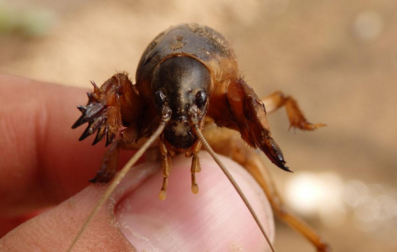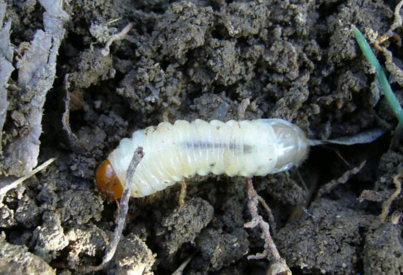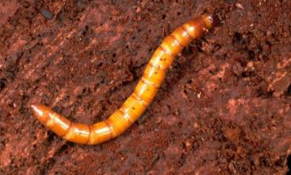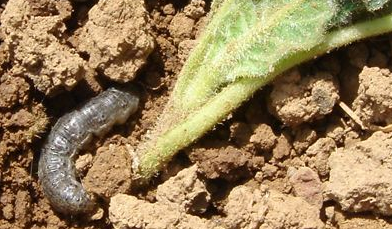è¼è›„ Also called Lala, earth dog. The adult worms (wholes are long) and the nymphs (the wings are not long) are harmful to the formation of potatoes. It uses the mouthparts and the large claws on the front (forefoot) to tear the underground stems or roots of the potato into a messy shape, causing the ground to wilting or dying, and sometimes biting the buds, so that the buds cannot grow, resulting in lack of seedlings. It digs tunnels in the soil, separating the young roots from the soil, ventilating the wind, causing water loss, affecting seedling growth and even death. It bites the tubers in the fall, causing them to form holes, or making them susceptible to decay and causing decay. Adults and nymphs of the cockroach are all moving up and down in the ground with changes in soil temperature. When the winter is over, dive 1.2 to 1.6 meters to build a hole in the dormant. In spring, the ground temperature rises and it is harmful to the 10 cm deep tillage layer. During the day, it is underground and at night to the ground. When the summer temperature is high, it will move to a depth of about 20 cm, and fall to the tillage layer in the fall. Generally, there are many organic matter, and the salt in the salt and alkali is harmful. The activities of the cockroaches are seasonally affected by the temperature. The period from November to December is the winter dormancy stage, and the period from March to April is the spring waking stage. From mid-April to mid-June, the migration from the nest to the sputum stage, from late June to August. In the latter part of the summer, the spawning stage of the summer is the peak of the fall from the beginning of September to the beginning of November. Grub Also called the silkworm, it is the larva of the chafer. In the potato field, it mainly harms the underground roots, underground stems and tubers, bites and drills, and the fractures are neat, so that the soil stems are not nutritious and the water supply is dead. After the tubers are drilled, they cause loss of quality or cause decay. Adults (chafers) will also fly to the plants and bite the leaves. The cockroach and its adults can survive the winter and move vertically up and down the soil. Adults are below 40 cm underground, larvae overwinter below 90 cm underground, and springs rise to a depth of about 10 cm. It likes organic matter and likes to live in the horse dung. Adults are active at night and are hidden in the soil during the day. The larvae have 3 pairs of chest feet, body fat, milky white, often curled into a horseshoe shape, and suspended. Morphological characteristics: Take the big black scorpion chafer as an example. The adult body is 16 to 22 mm long and has a dark brown to black body and is shiny. The sheath wings are long and elliptical with 4 distinct longitudinal lines on each side. There are 3 teeth on the outside of the forefoot sac and 1 distance on the inside. The mature larvae are 35-45 mm long, with white milk and wrinkles, and are bent into a "C" shape at rest. The head is yellowish brown or orange. The carcass is 21 to 23 mm long and is bare, with a small head and a slightly curved body. It changes from yellowish white to orange. Habits of life: In the north, it is more than two years and one generation, and the larvae and adults are overwintered in the 55-150 cm non-frozen soil layer. The egg period is generally more than 10 days, the larval stage is about 350 days, the pupa stage is about 20 days, and the adult stage is about 1 year. From mid-May to mid-June, the overwintering adult is unearthed, and at 20:00 to 21:00 in the evening, adult feeding and mating activities are in full bloom. The eggs are scattered in the soft and moist soil around the rhizosphere of the host. Most of them are irrigated, and each time they can lay about 100 grains. The larvae hatched in the same year entered the age of 3 in the autumn, and when the soil temperature was appropriate, it caused serious damage. After the fall of soil temperature in late autumn and early winter, the damage will stop, and the winter will be moved downwards. In the middle of April of the next year, the spring will be the peak of damage. When the summer is high, the soil will be moved down. The adult feathers will mostly survive in winter. Adults have pseudo-death, phototaxis and hemorrhagic properties, and have strong tropism for unfertilized manure. Golden worm Also known as ironworm, it is the larva of the taro. In the case of larvae, spring buds, roots and underground stems, slightly thicker roots or stems are rarely bitten, but the seedlings will gradually wilting or die. The autumn larvae drill into the tubers and form a channel in the potato, which reduces the quality of the tubers and sometimes causes decay. The adult worms and larvae of the golden worms can be drilled into the soil below 60 cm for wintering, and there are wormholes when drilling, and the wormholes rise to the tillage layer in spring. When the soil temperature exceeds 17 °C in summer, it gradually moves down; after the surface temperature drops in autumn, it enters the tillage layer. The larvae are white when they first hatch, and change color with the change of growth, shiny, hard, 2 to 3 cm long, slender. Tiger Also known as the silkworm, cut rootworm. It is harmful to larvae. The adult is a nocturnal moth, which is divided into small tigers and yellow tigers. The ground tiger is mainly used to damage the seedlings of potatoes and other crops. The seedlings are bitten off close to the ground, so that the whole seedlings die, and the bitten seedlings are often dragged into the wormhole. When the larva is young, it also bites the young leaves, causing the leaves to appear nicks and holes. It also bites the tubers in the ground, and the holes that are bitten out are smaller than the bites. The larvae of the ground tiger are yellow-brown, dark-brown or dark-brown worms, usually 3 to 5 cm long. The small tigers like the damp environment, the field coverage is large, the weeds are more, and the soil moisture is large. The yellow tigers like the arid environment, the humidity requirements are not high, and the summer is afraid of heat. Their adults have both optical rotation and molasses. Medical Adhesive Tape,Protective Elastic Tape,Low Allergic Medical Tape,Healthcare Athletic Tape RFX+CARE Manufacturing Co.,Ltd. , https://www.rk-rfxcare.com


